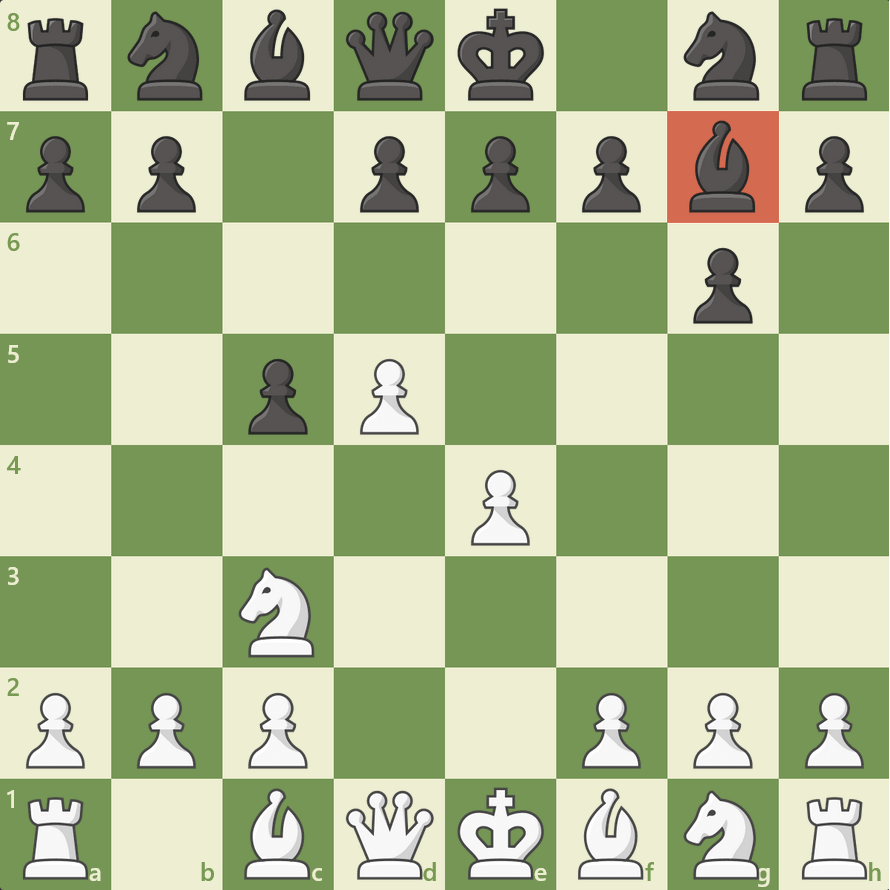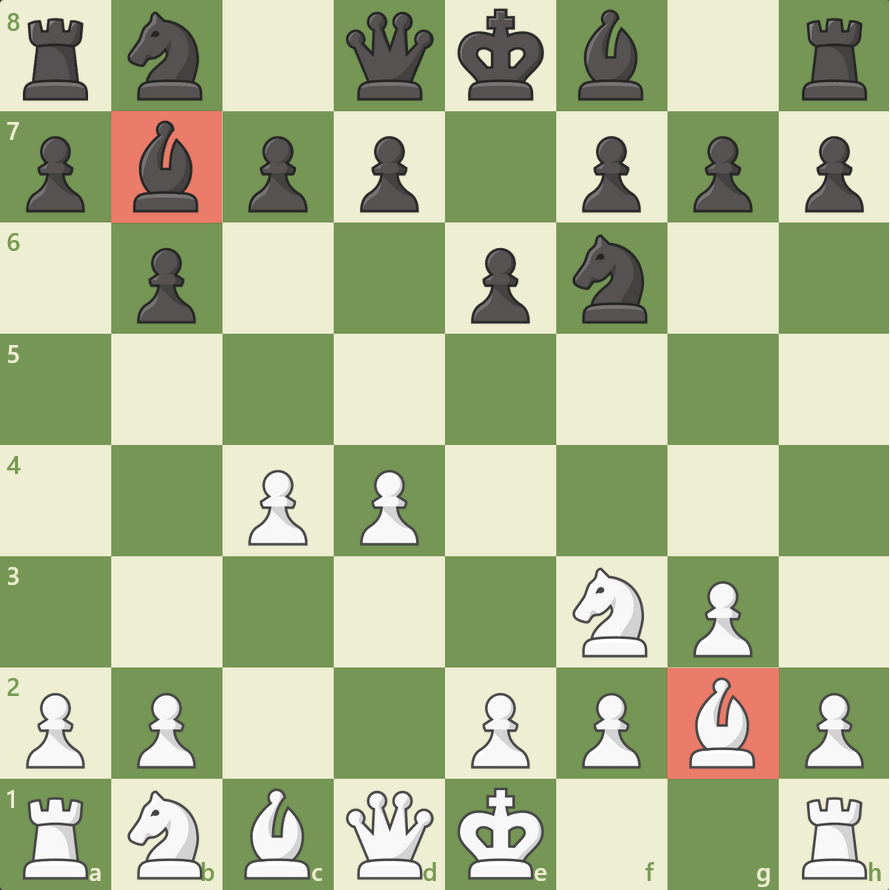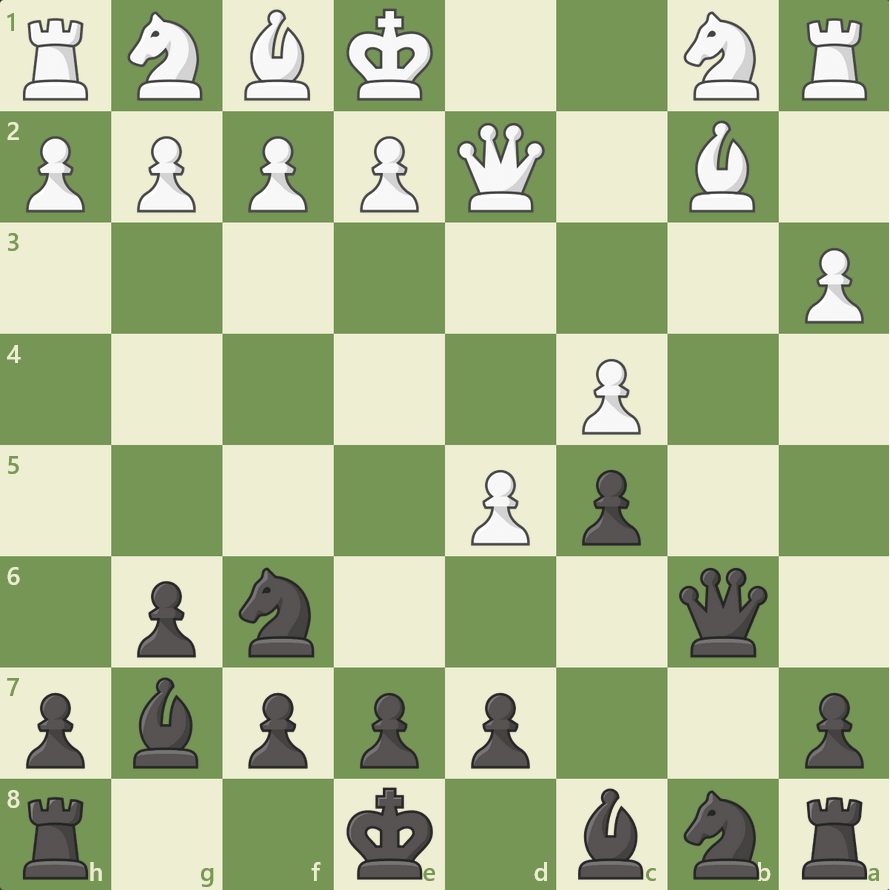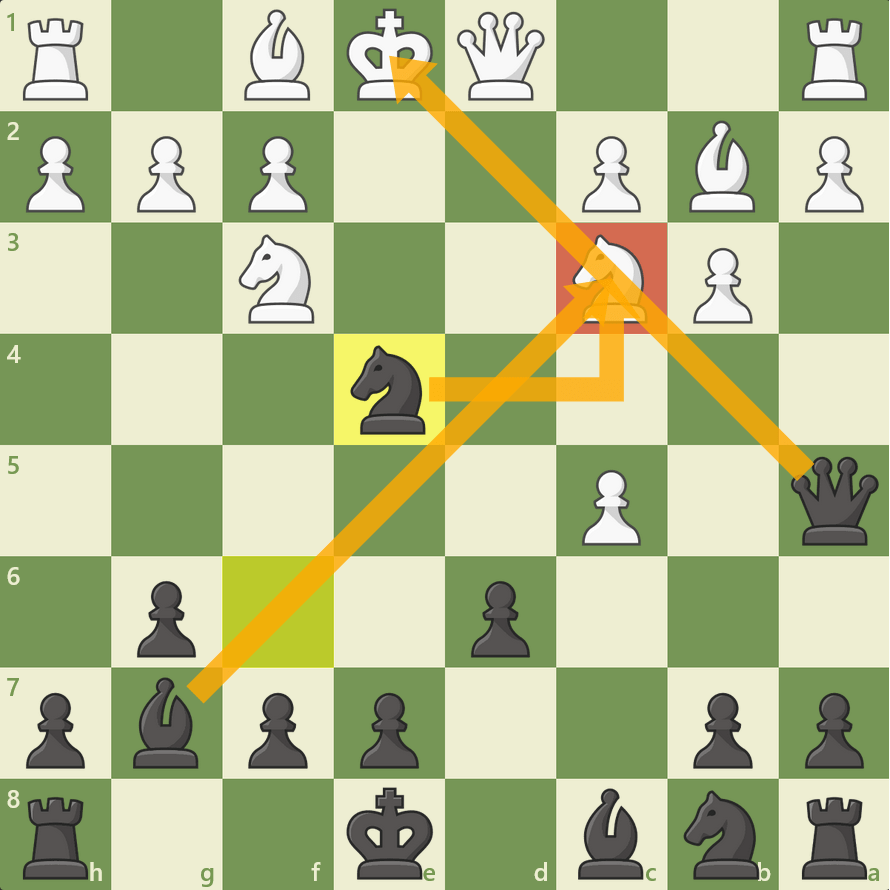
Fianchetto
Fianchetto? What is that? Another fancy-sounding chess term? Don't worry—we've got you covered! Let's learn about the fianchetto in chess.
Here's what you need to know about the fianchetto:
What Is A Fianchetto?
A fianchetto occurs when a bishop is developed onto the second rank (for White) or the seventh rank (for Black) on squares g2, g7, b2, or b7. This step is taken to place the bishop on the longest diagonal possible. Let's take a look at an example.
In the following position from the Modern Defense, Black has fianchettoed their dark-squared bishop on g7 and on the long a1-h8 diagonal:

The fianchettoed dark-squared bishop has a lot of scope and potential as it defends the black kingside, attacks central squares (e5 and d4), and also has some influence on White's queenside (attacks the knight on c3).
A fianchetto is considered a "kingside fianchetto" if performed on the kingside (on g2 or g7). A "queenside fianchetto" is performed on the queenside (on b2 or b7). Also, note that a kingside fianchetto coupled with kingside castling is a strong defensive setup that can be difficult to attack.
What Openings Use The Fianchetto?
Many openings feature a fianchetto! For White, the King's Indian Attack, Catalan, and English are known for a kingside fianchetto. For Black, the King's Indian Defense, Grunfeld Defense, Sicilian Dragon, Modern Defense, and Pirc Defense are equally well-known for a kingside fianchetto. Of course, many other openings also utilize a fianchetto, but we will take a look at only a few of these examples.
After the opening moves 1. Nf3 d5 2. g3 Nf6 3. Bg2 in the King's Indian Attack, the following position is reached:

White has performed a kingside fianchetto with the light-squared bishop on g2. For the time being, it is creating a strong defensive setup on the kingside. In the future, it will also exert pressure on the center (after the f3-knight eventually moves).
After the initial opening moves 1. d4 Nf6 2. c4 g6 3. Nc3 Bg7 4. e4 d6 in the King's Indian Defense, the following position is reached:

The King's Indian Defense is a dynamic opening that allows White to create a large center with the aim of attacking it later. This defense has been a favorite of many world champions, including GMs Garry Kasparov and Bobby Fischer.
Of course, some openings use a queenside fianchetto, but they are less common than the kingside fianchetto. For Black, a strong and solid defense known as the Queen's Indian Defense features an early queenside fianchetto, and for White the Nimzo-Larsen Attack (featuring an early b3 and Bb2) can be played, although this opening is not often used.
After the opening moves 1.d4 Nf6 2. c4 e6 3. Nf3 b6 4. g3 Bb7 5. Bg2, we have reached a Queen's Indian Defense:

As you can see, Black has fianchettoed on the queenside while White has fianchettoed on the kingside—pretty cool, right? These bishops will battle it out on the long diagonal for a while (or will be exchanged).
Test
Now that you know what a fianchetto is and some openings that it is used in, let's practice some tests to see if you can unleash the power of a fianchettoed bishop! It is Black to move in the following position. Can you see a move that wins material by opening the dark-squared bishop on g7?

Yes! Ne4 is a powerful move that opens a discovered attack for the fianchettoed bishop on g7 and also attacks the white queen on d2 (a double attack)!

No matter how White replies, they will lose material. Ok, let's try one more. In the following position, it is Black to move. How can Black take advantage of the pinned knight on c3?

Yes! Nxe4 wins the pawn on e4 and opens a triple attack on the pinned knight on c3, winning material! Great job!

Conclusion
You now know what a fianchetto is, some openings that the fianchetto is used in, how a fianchettoed bishop can be used actively, and how to identify some tactics that can occur using a fianchettoed bishop! Enjoy this new knowledge, and may every fianchetto give you control of a long diagonal!






